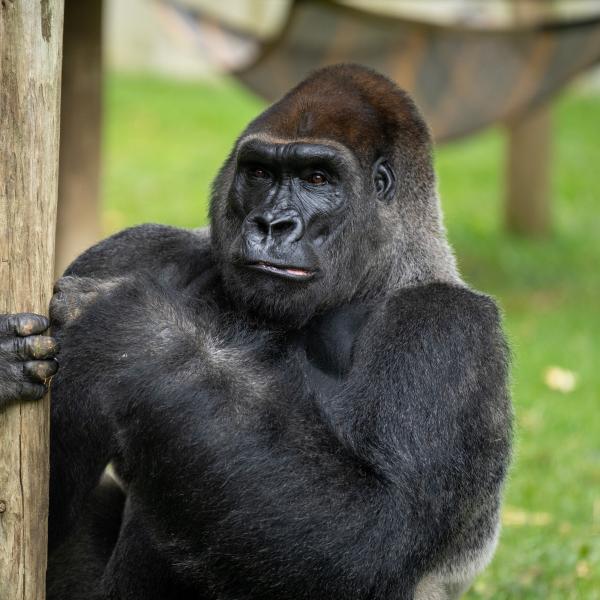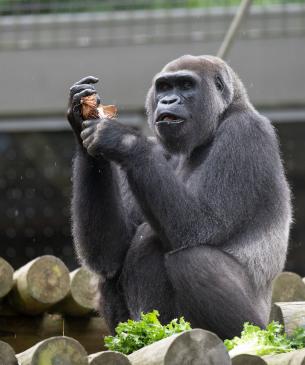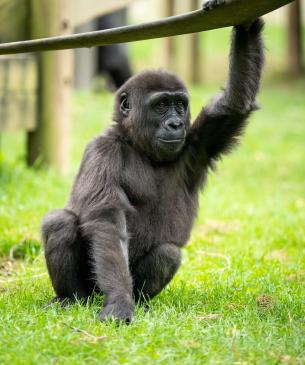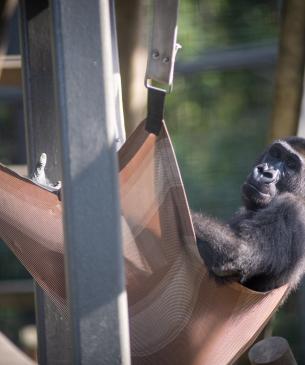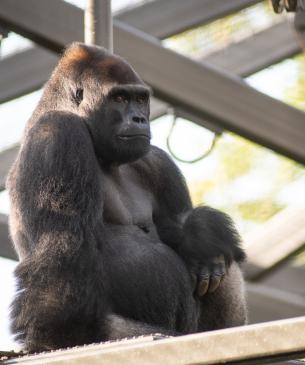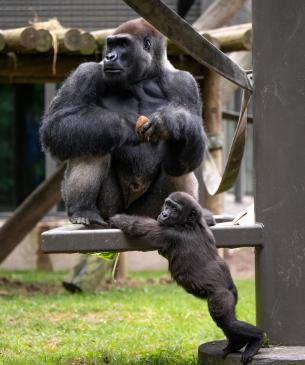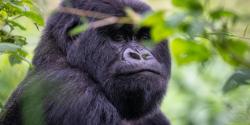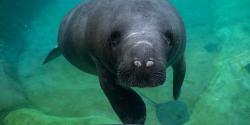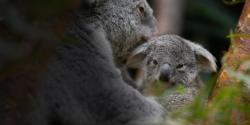Gorillas are the largest of the great apes, but the western lowland gorilla is the smallest of the subspecies.
Habitat loss and deforestation have historically been the primary causes of declining populations of Africa’s great apes, but experts now agree that the illegal commercial bushmeat trade has surpassed habitat loss as the primary threat to ape populations—particularly for western lowland gorillas.
At the Columbus Zoo, we’re dedicated to the conservation of western lowland gorillas, specifically through our participation in The Association of Zoos and Aquariums' (AZA) Saving Animals from Extinction (SAFE) program and support of the Gorilla Doctors project.
Scientific Name: Gorilla gorilla
Conservation Status: Critically Endangered
Size: Males: 5'5" to 6' Females: 4' to 5'
Weight: Males: 300-500 lbs. Female: 140-270 lbs.

